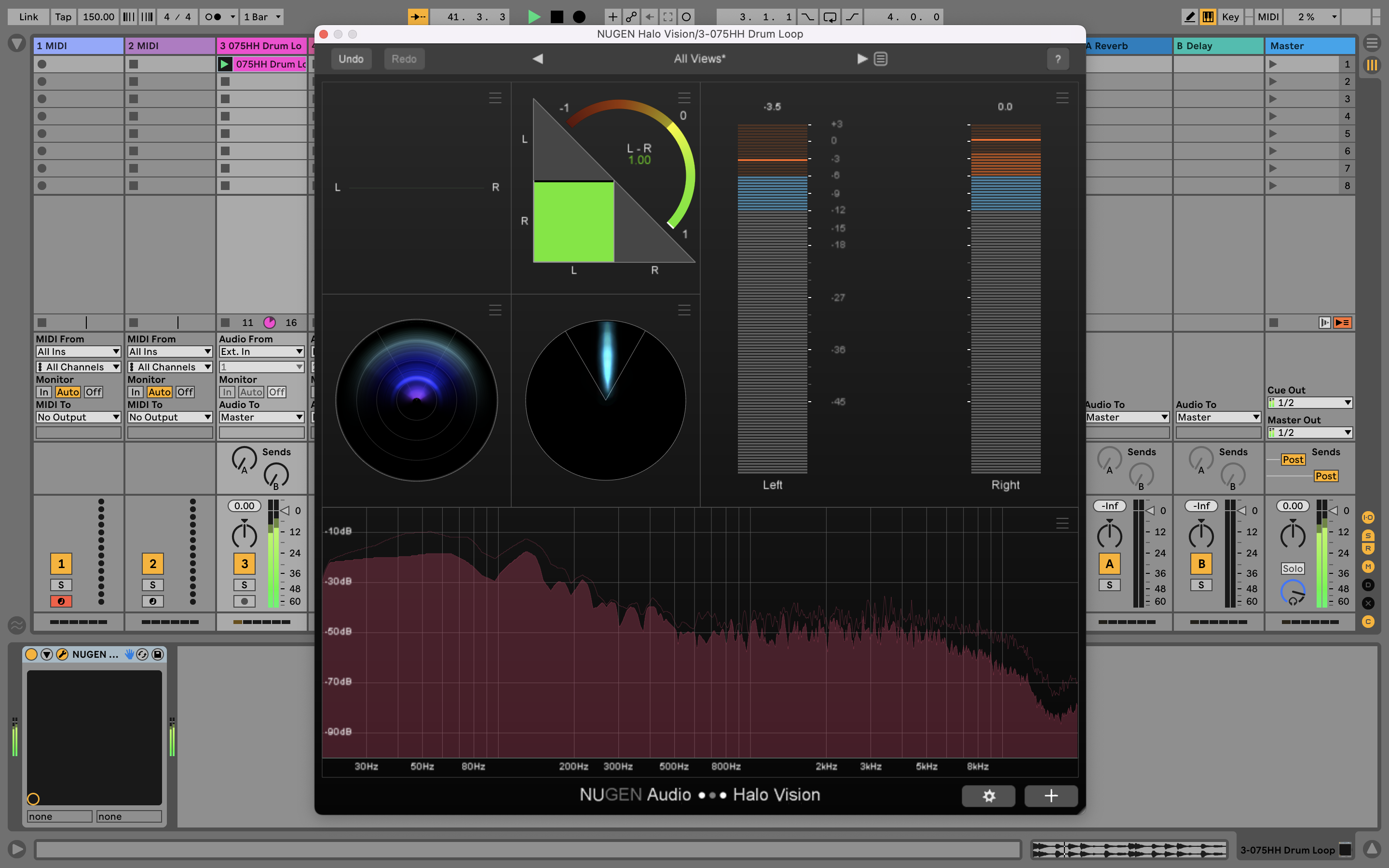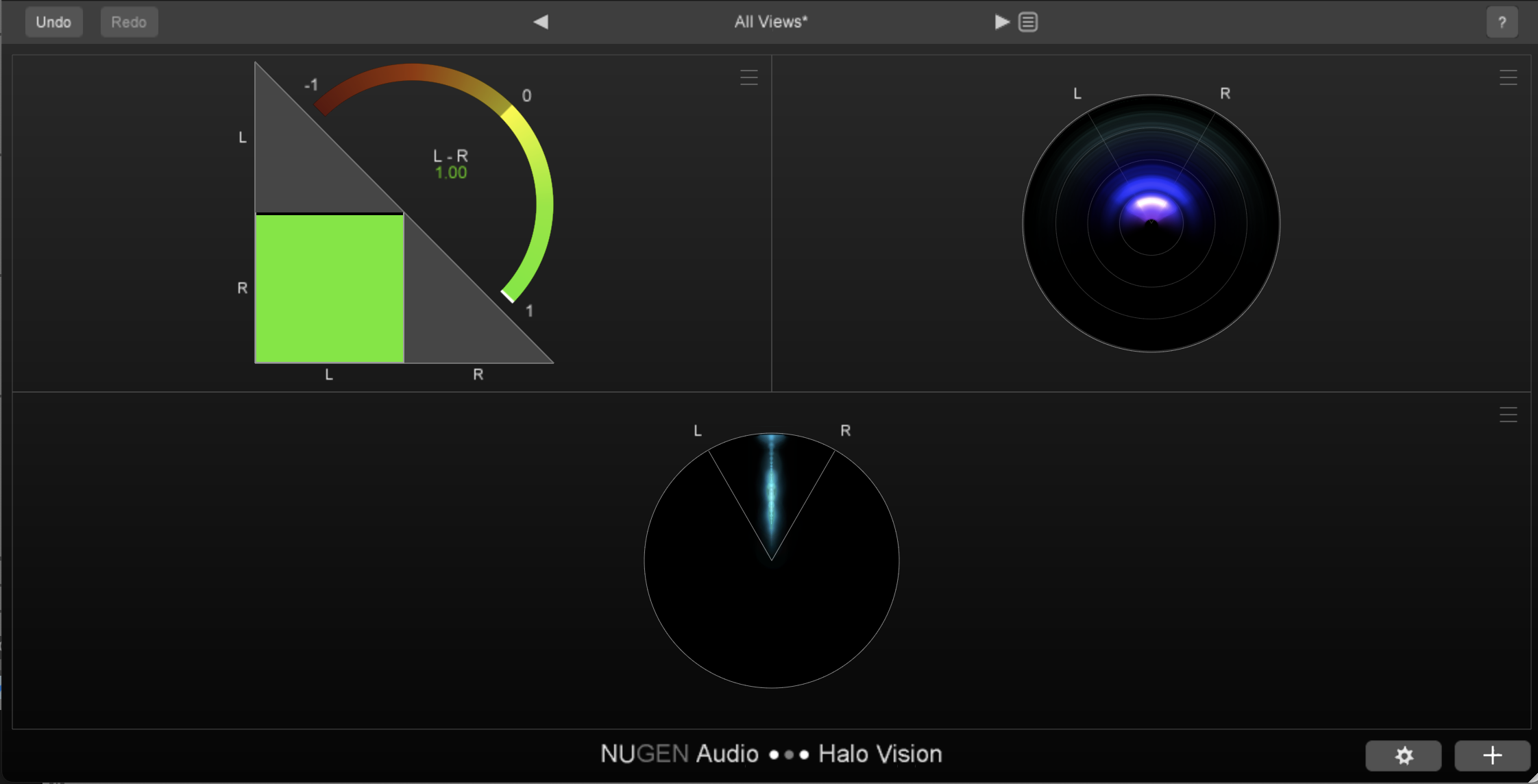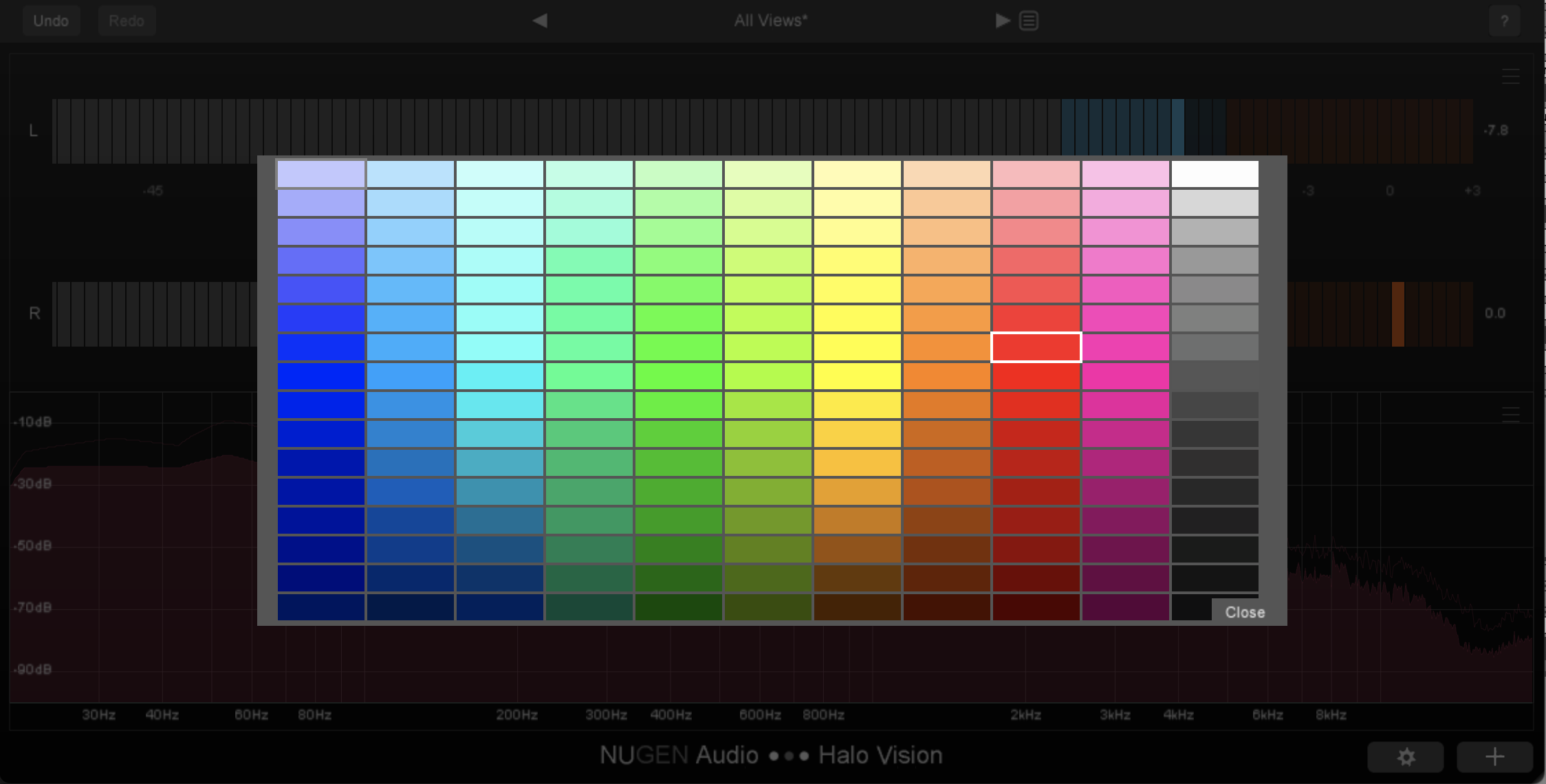NUGEN Halo Vision Review
- November 11, 2022
- by Dan Brashaw
- Product Intelligence Report
When it comes to traditional stereo audio plenty of excellent visual analysis tools exist. Whether it’s a spectral analyser, a stereo imager or LUF meter, those working in the world of two channel audio are spoiled for choice. However, the options suddenly get a lot more limited for those working in immersive or 3D audio.

If you’re working in video games, surround sound or mixing for the stereo audio capabilities of platforms like Apple Music, visualization tools are essential, but – not surprisingly given how much more niche this field of audio is compared to stereo – there are not many options available.
Fortunately, though their options are limited, there are solid tools available. NUGEN Halo Vision is one of these options. Equipped with several different modules each providing different visual analysis of your audio, Halo Vision is a comprehensive 3D audio analyser.
That said, though Halo Vision allows comprehensive analysis of multi channel audio, it can be used in traditional stereo scenarios as well. The tools available in the plugin will be useful for anyone no matter the type of audio they are working with.
Let’s load NUGEN Halo Vision in our DAW and see how it performs.
Correlation views
There are two main view types in Halo Vision: correlation views and haze views.
The correlation views consist of a correlation matrix and a correlation web.
The correlation matrix visualizes the phase relationship between every channel in your mix. Phase issues are a big problem for all people working in audio. They can be hard enough to fix when you’re just dealing with a left and right audio channel, and as you’d expect things only get more complicated as you add more channels.

The correlation matrix makes dealing with these issues simple. Using a color coding system the matrix displays where there may be potential phase issues between channels so you can hone down on those channels, identify if there is a problem, and fix it.
This matrix system is a very intuitive way of working. Color coding makes everything simple and the clean display makes what can be an absolute headache – that is identifying phase issues in a 3D or immersive audio mix – quick and painless.
The correlation web performs a similar function to the correlation matrix. It indicates when different channels become anti-correlated by lighting up the connection between the two channels.
It's pretty to look at, however it’s not as useful as the correlation matrix and I found myself not referencing it very much at all. The web is simply not as easily or intuitively understood as the matrix.
One huge benefit of Halo Vision that must be noted is the fact that the plugin uses contextual correlation when displaying the phase relationship between channels. This means that it takes into account the volume levels of different channels and only displays potential correlation issues when they may actually occur. Often channels can be out of phase but their volume level differences mean that they won’t cancel each other out. This contextual correlation system helped save me time that I could have otherwise wasted needlessly making mix changes with no perceivable benefit.
The other main view type in NUGEN Halo Vision are the haze views. These haze views are reminiscent of stereo imagers. They display information about each channel in a circular spectrum view.
The frequency haze view displays the frequency content of each channel with low frequency info at the center of the display and high frequency towards the edge. The location haze view is similar but instead of frequency information it displays the perceived energy coming from different channels.
These two views are both very intuitive and useful providing the information you need quickly and in a way that is easy to grasp – especially if you are used to using stereo imaging devices.
The rest of the features
As well as the haze and correlation meters, Halo Vision also comes with a couple of more traditional meters that have been tweaked to work with 3D and immersive audio as well as stereo.
There is a spectrum analyser which shows a readout for each channel. The channels are color coded so it’s easy to see what’s happening where and they can also be grouped if you wish.

Additionally Halo Vision has per channel true peak meters so you know exactly where each channel is sitting volume wise and a timecode readout which corresponds with your DAW.
The interface of Halo Vision is highly customizable – if there are particular modules that you won’t want to use in your mix you can remove them from the UI and conversely you can choose to display only the meters that you wish to use.
The UI is customizable in even more ways. One really neat feature is that users can customize the color of certain elements of the Halo Vision UI: for example the true peak meters or the time code read out. It’s a little thing but it does really help to make a plugin that feels like it’s a part of your studio setup as opposed to a tool that you just load up every now and again.

As briefly mentioned earlier, NUGEN Halo Vision not only provides comprehensive visual audio analysis for 3D and immersive audio, it can be used as a powerful analysis tool for traditional stereo audio as well.
The phase cancellation matrix and location haze views are two particularly useful tools for stereo mixing, effectively working to identify phase issues and help understand the stereo image of your mix down.
Conclusion
NUGEN Halo Vision is an excellent visual audio analysis tool. It’s modular, customizable interface makes it easy to build the visual analyser you need for your workflow. It is one of the top choices available out there for anyone working in 3D and immersive audio, but it is also a great option for those working in stereo as well.
To me the standout module is the correlation matrix which makes identifying and dealing with phase issues incredibly intuitive – the simple layout and color coding gives you everything you need from a visual analysis tool. The other modules available are also designed in a simple but powerful way giving in depth audio insight with over complicating things.
Author

Dan Brashaw
Dan Brashaw is a producer and writer based in Bristol, UK. He releases dance music under the moniker Skeleton King, and his music has been released on Lobster Theremin, Fantastic Voyage and Breaks 'N' Pieces. His writing has been published in DJ Mag, Electronic Musician, and via a multitude of online outlets.